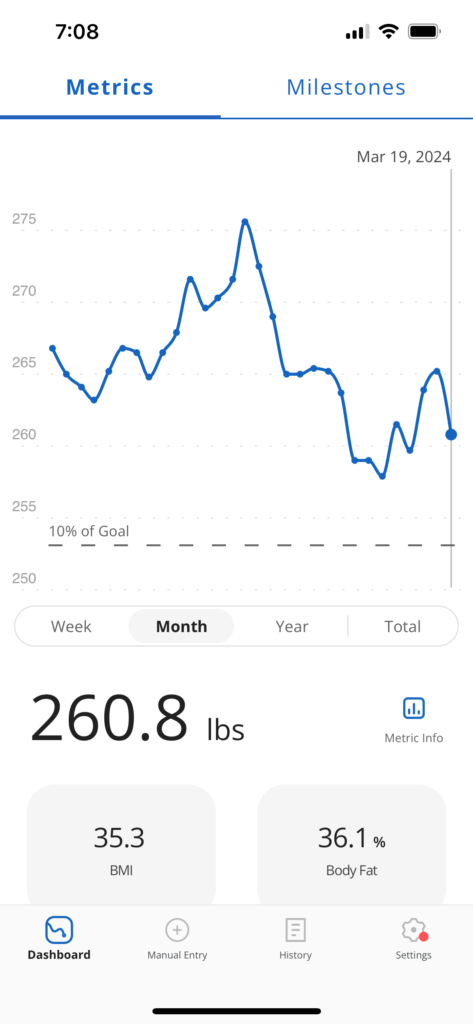Yesterday was a fasting day, and today I’m nearly five pounds lighter. I also went to the gym, and while I only exercise moderately anymore, I do still get my heart rate high enough to break a sweat. And even though I’m probably not burning more than a few hundred calories during my roughly 30-minute workout, I do tend to lose a bit more on the days during which I’ve exercised. This is probably because I continue to burn calories at a slightly higher rate for some time after the workout. The point is: even just a little exercise can accelerate weight loss, and I need to figure out how to get some exercise worked into every day.
As I’ve gotten older, my exercise options have become more limited. I haven’t been able to run (even on a treadmill) for at least a decade because my knees just won’t tolerate it (my flat feet never tolerated it well, either). While exercise bikes are an option I’ve used in the past, I’ve never felt very comfortable using them. Whether a standing bike or a recumbent one, my body just doesn’t seem to fit them very well. I feel like I’m hunched over on a standing bike, and, because of my long legs, I feel a bit squished in a recumbent. Either feels very unnatural compared to a real bike, so maybe I just need to get a real bike again.
My increasingly rickety body also limits my options when lifting weights. I have significant arthritis in my shoulders, so a lot of arm exercises are out of the question. Bench presses are likely how I prematurely ruined my shoulders (and they’re not a particularly good exercise anyway), but any sort of movement in which the weight is at any point above my shoulders just aggravates them. Some leg exercises are becoming painful, too, because of foot and ankle problems (probably related to the flatness of my feet). Anyway, what’s become clear is that I can’t do everything I used to be able to do, and I need to modify my exercise regimen accordingly.
I was reading about Total Daily Energy Expenditure (TDEE) yesterday. It’s comprised of all the calorie-burning activity that the body engages in throughout the course of the day. The most significant component is Basal Metabolic Rate (BMR), which is just your base metabolism (energy burned for basic physiological processes) and is responsible for about 60 percent of the calories your body burns in a day. Another factor is the Thermic Effect of Food (TEF), which is the energy required to digest food and accounts for about 10 percent of calories burned. The remaining two factors are from physical activity. Exercise Activity Thermogenesis (EAT) is (no surprise) the energy used when you engage in exercise, and it accounts for 5 to 10 percent of calories burned. Finally, Non-Exercise Activity Thermogenesis (NEAT) is the energy used when you’re moving but not engaged in exercise (fidgeting at your desk, for example, while you try to think of things to write about). It accounts for up to 15 percent of calories burned.
I didn’t intend to have a Ted Talk about energy expenditure, but I’m finding it hard to come up with anything else to write about today. My brain seems to be more foggy than usual, so I’ll give myself a break and try to be more creative tomorrow.
